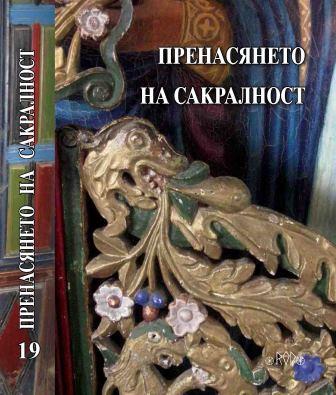
We kindly inform you that, as long as the subject affiliation of our 300.000+ articles is in progress, you might get unsufficient or no results on your third level or second level search. In this case, please broaden your search criteria.

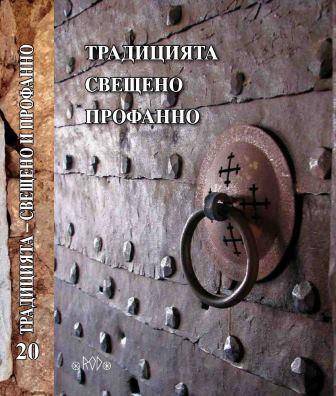
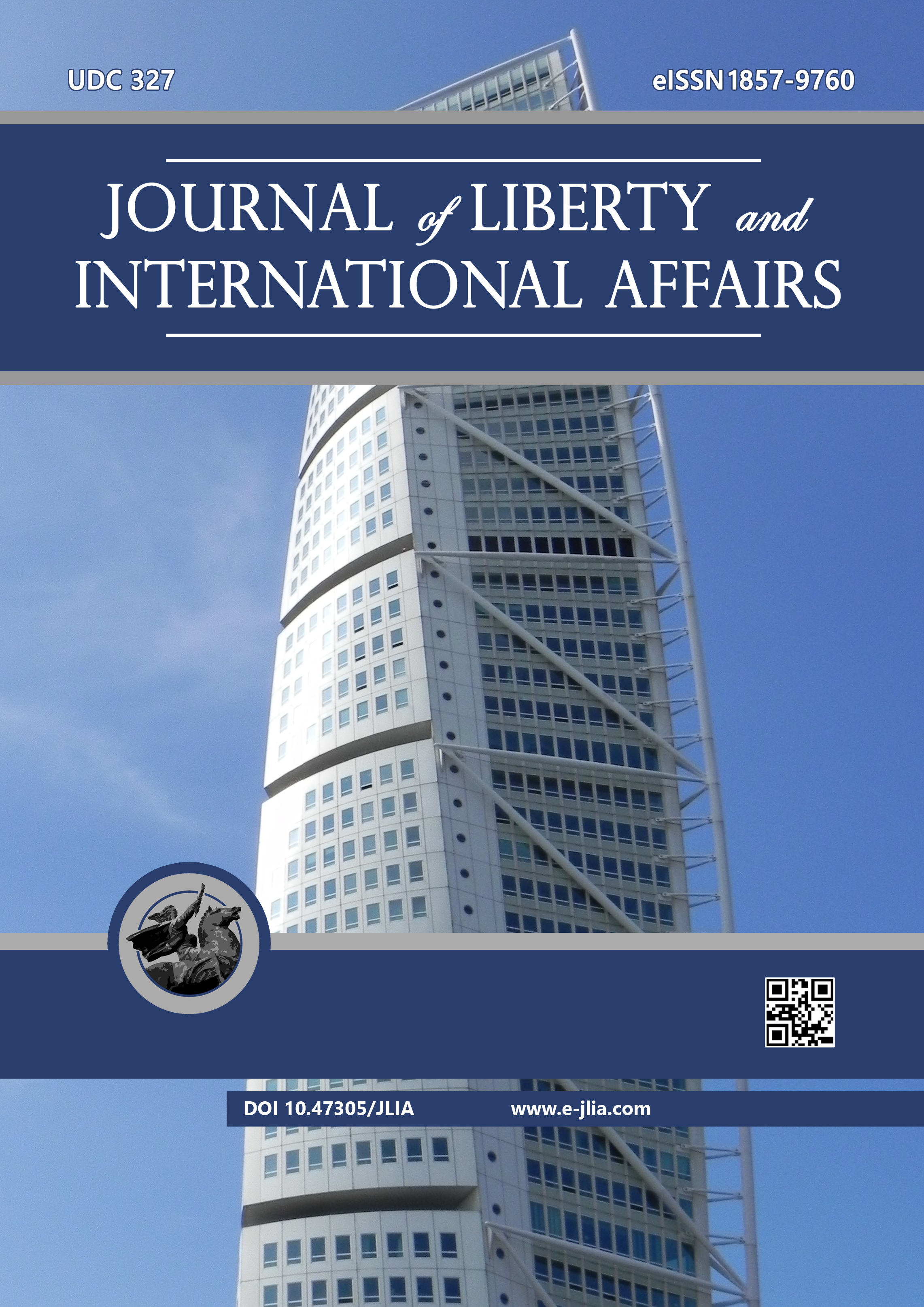
Akpan BasseyAfter the dissolution of the Soviet Union in 1991, Ukraine's foreign policy evolved in the geopolitical sphere of Central and Eastern Europe. As a result, the new Ukrainian interests were built on a sense of national identity. They looked to Russia and Europe to find a sense of national identity. However, Ukraine's Eurasian and Central-European ancestry caused a distinct rift in society about national identity, which influenced the formulation of foreign policy. Those trying to co-exist with Russia find it difficult to develop a Ukrainian identity completely different from Russia, justifying the togetherness through the Pereyaslav agreement. On the contrary, the nationalist-minded Ukrainians, those who want to cultivate an identity distinct from the Russians and, more specifically, look for a Central-European identity, try to influence the course of the foreign policy formation of Ukraine by citing their historicity of Europeanness with the medieval princedom of Kiev and viewing the Pereyaslav memory as disastrous for Ukraine’s independent existence. Thus, national identity is one of the main causes of the Ukrainian-Russian conflict. This study aims to uncover significant events in Ukrainian foreign policy toward Russia that led to modern-day conflict.
More...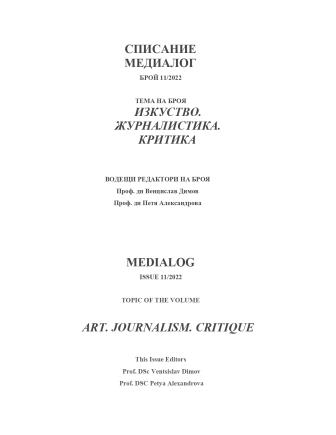
The digital world has incorporated all previous forms of communication: today we read online, listen to music, visit virtual museums and so on. But does cultural consumption via the new meta-media remain the same? The following observations are the result of a seminar with students of cultural studies. I am discussing the changes in the experiencing of the high 'culture of the soul' (Cicero), not everyday digital practices.
More...
The edited volume 'The Question of Justice. The Prosecuted Journalists in Bulgaria' (University Press 'St. Kliment Ohridski', 2022) with interviews, articles and commentaries, edited by Prof. Snezhana Popova and Assoc. Prof. Zhana Popova, is a valuable contemporary chronicle that fits into the history of Bulgarian media and journalism.
More...
Chavdar Parushev’s monograph is a study of the literary genre of anti-utopia, situating the latter in a complex web of mutual determination together with the genres of utopia, science fiction and satire. The central analytical instrument developed in this study is the so-called ‘Plato’s lens’ which makes it possible to center thought about these genres around the relation between subject and state. Thus the development in time of new forms and technologies for relating subject and state leads to new developments in the anti-utopian genre, which becomes a way to think about the crises of producing human meaning. The monograph traces many crises of this kind, including examples from history which have overtaken fiction. It thus demonstrates the important uses of anti-utopia, in times of accelerating change in what it means to be human.
More...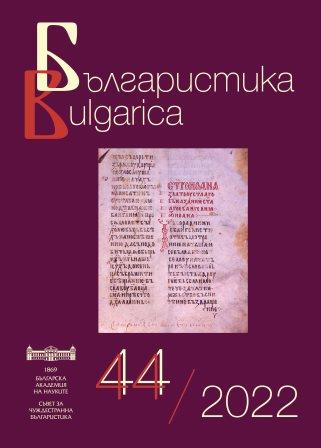
Selected bibliography in the field of Bulgarian Studies published in the current year
More...
Data about scientific events in the field of the humanities in Bulgaria in 2015Content of the main Bulgarian scientific journals for the current year in linguistics, literature, history, folklore, ethnography, archaeology and art studies.
More...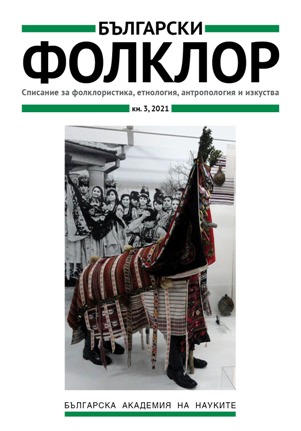
The article deals with the role of Czechs in Bulgaria in the decades after its Liberation in 1878. The author argues that the Czech presence in the country was substantial and clearly visible, so it had a significant imprint on the development of Bulgarian society at the time. This might be the explanation for the tens of “places of memory” and objectified “grateful memory” for the “Bulgarian” Czechs, expressed in the names of settlements, streets, schools, mountain peaks, etc. Other examples include monuments and memorial plaques, as well as works of art dedicated to outstanding Czech people such as Konstantin Jireček, the Škorpil brothers, the Prošek brothers, Antonin Kolář, Antonin Novak, Josef Schnitter, Libor Bayer, and many others.
More...
The article investigates contemporary labour migration of Bulgarians to Italy. An important analytical instrument for drawing a complete picture of the Bulgarian presence in the host country are the research perspectives: “from above, generalized” or “close and detailed”. The sociocultural expressions of migration are interpreted on the basis of in-depth interviews, in which sharing personal experience is of major importance. The personal experience of different groups of Bulgarian migrants is viewed as a source of information for the degree of their integration and adaptation. Some comments are suggested on the peculiarities of the communication between the interviewees and the researcher. The author problematizes notions and images of the Bulgarians in Italy through the lens of employment types and through auto and hetero stereotypes that are delineated in interviews and free conversations. Another subject of attention are the questions about the visibility of Bulgarian migrants in Italian society. The results of the study demonstrate that the Bulgarians are well adapted to the living conditions in Italy. At the same time, they do not always feel presented clearly enough in the host society.
More...
This contribution explores the music performance during the reading of a barely known and insufficiently studied life of the Prophet Muhammad, İpsala'lı Ebu'l-Hayr Mevlidi, better known as Mustafa Mevlidi. That life is used in the Mevlid rituals in the region of Krumovgrad and in some villages near the town of Haskovo. In order to present in fullness the specific local characteristics of the music connected to religious practice in the studied region, the author describes in detail the peculiarities of the music in the cami practice. The main characteristics of the ritual are delineated: its structure, the occasions on which it takes place, and the way of performing it. In the course of analysis of the musical material, which has been recorded in the region of Krumovgrad, the author also adds musical examples from the Mevlid ritual among Sunni Turks from other parts of Bulgaria. The main fieldwork material utilized in the study has been personally collected by the author between 2010 and 2021.
More...
For almost three decades now, there is an ongoing, but also inconsistent search for a new conceptual framework for the study of ethnicities and identities. Against this background, the article offers an interpretation of a fundamental monographic text on this subject from the recent past, a contemporary evaluation of a book from the arsenal of ethnic/national dialectic theory. Written by an insightful connoisseur of culture and history, the book presented some innovative and provocative ideas about the relationship and the dynamic combination of the most important phenomena and characteristics of the ethnonational process. The author shares some thoughts about the ways in which these ideas can be interpreted from the point of view of today’s methodological explorations.
More...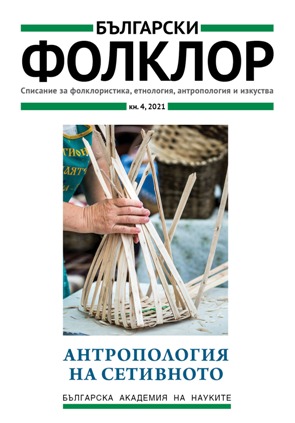
Paradoxically enough, our present times combine conservation with the destruction of architectural heritage. The preservation of this heritage is closely related to the foundation of the nation state and serves to show the “national genius” embodied by the peasant. Simultaneously, the different disciplines that study the issues of architectural heritage show that there is a tendency of mutual disregard. Nevertheless, the transnational concept of the rural home in Southeast Europe (mainly Romania and former Yugoslavia) which I have studied and documented in the 1970-s, displays similar features in close geographical zones, and also in zones that are marked by the culture and history of imperial colonization: Austrian in the first case and Ottoman in the second. The perspective from the point of view of regional heritage makes possible to apply a trans-border approach in order to reveal connections of kinship between neighboring villages separated by political boundaries. In the article, the differences between certain cultural areas are explained with the support of history.
More...

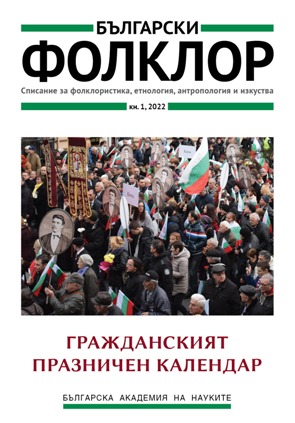
The paper puts forward the proposition that today’s Bulgarian civic festive calendar may be examined as a system composed not of individual holidays but of corresponding holiday pairs (3 March – 2 June, St. George’s Day – St. Michael the Archangel’s All Soul’s Day, 24 May – 1 November). The holiday pairs have been formed gradually, and in the course of time a ‘strong’ and a ‘weak’ holiday came to exist, the former – honouring a supreme community value, whereas the latter – paying respect to the memory of the heroes who devoted their lives to its achievement. The paper makes an attempt to substantiate the thesis that dualism is the leading trend in the development of the festive calendar, which might be observed in its past historical stages as well.
More...
The article examines and analyses the process of “inventing” Kyustendil Spring Day in the context of socialist festivity. Based on the local tradition of welcoming spring in Kyustendil, which integrates pre-Christian rituals related to the day of spring solstice, the Day of Forty Martyrs of Sebaste in the Orthodox calendar and Mladentsi in the folk calendar, the holiday is gradually “domesticated” by the socialist authorities in the late 1960s, purged of its religious elements and re-invented – engaged with “new, socialist content”. Having combined various festive forms, symbols and rituals and occupying various urban spaces throughout the years, the holiday eventually established itself as a successful “invented tradition” during the socialist period, including several elements: a beauty contest, a ceremony for handing over the symbols of spring, a carnival procession, a public celebration on the Hisarlaka hill above the town, and accompanying cultural and sports events.
More...
The holiday is an essential element in the ideological regulation of public life; it plays an important role in shaping and stabilizing the group celebrating it, in all cases by actualizing the most important unifying values, and very often – by distinguishing examples of exemplary behaviour. The spread of the COVID-19 epidemic at the very beginning of 2020 leads to a number of radical changes in social life. The speed with which processes develop, as well as the search for new forms to continue established practices, leads to experimentation with the possibilities of new technologies, as well as of new conditions – education in an online environment, online shopping, outsourced commercial cash registers for outdoor service, limiting the capacity for public access, reducing programs, etc. Limiting physical access to official celebrations provoked an attempt to compensate for it by broadcasting the festive ceremonies live. However, the transfer of an event to an online environment places local communities in the passive role of spectators of a performance, without the opportunity of participation, and the social function of the celebration is reduced to the possibilities of the social network to communicate through texts and chat with other representatives of the community who observe the broadcast. These restrictions seem to compromise the very idea of a celebration and make visible the fact that its fundamental feature is the possibility of physical presence and participation of citizens.
More...
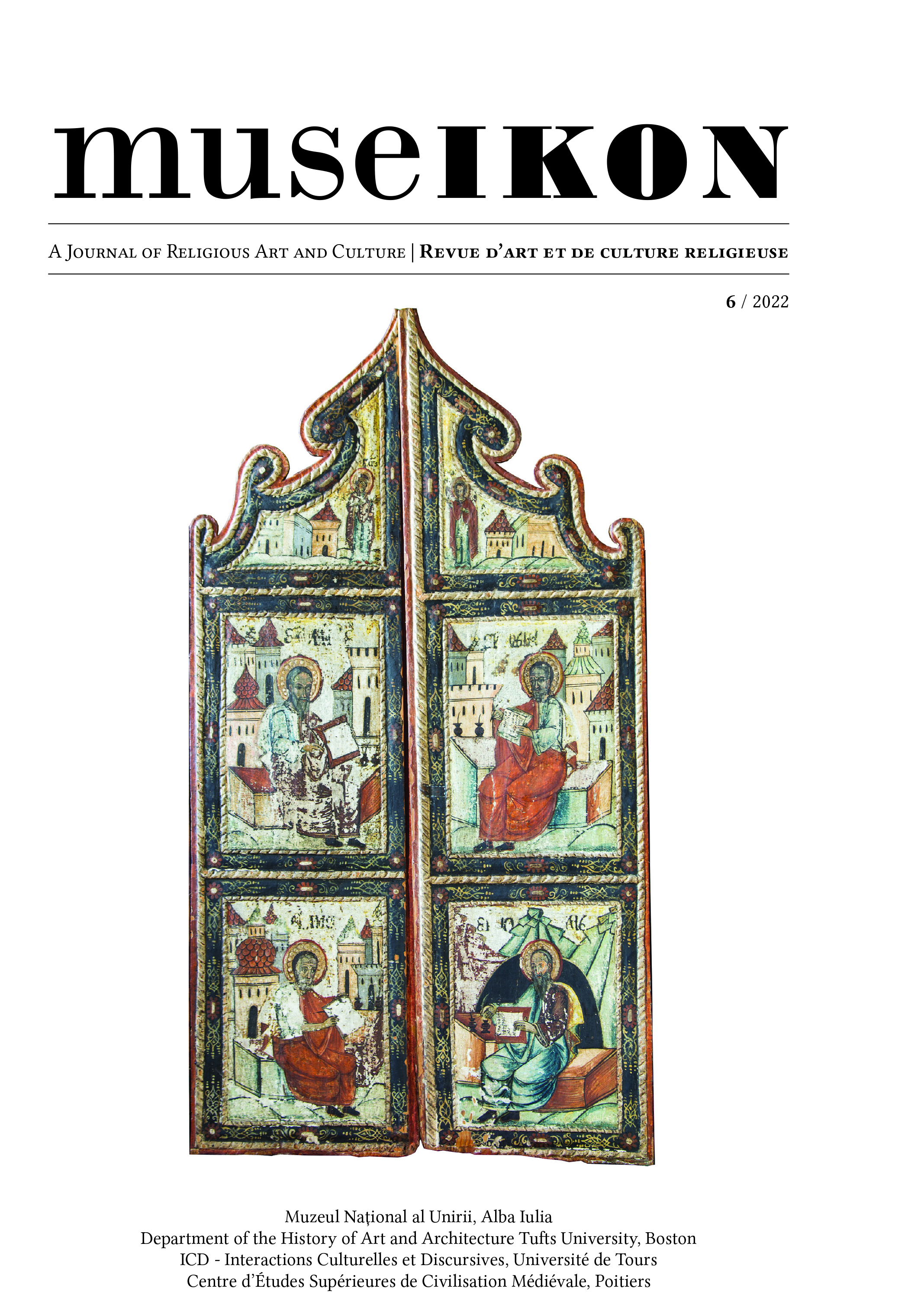
Au xviiie siècle, des peintres ukrainiens et serbes formés à l’école d’art de la Laure de Kyïv-Petchersk ont inauguré le processus de changement de la peinture religieuse serbe qui, dans la région administrée par le siège métropolitain de Karlovci, est passée d’un style ‘traditionnel’ (ou ‘manière post-byzantine’) à un style plus ‘occidental’ (‘baroque’). À première vue, il pourrait sembler inhabituel que les influences occidentales décisives pour la peinture serbe du xviiie siècle ne soient pas arrivées directement de l’Occident – à savoir de Vienne, l’un des principaux centres de l’art baroque européen et capitale de l’empire dont le territoire englobait le métropolitain de Karlovci -, mais de l’espace artistique ukrainien, déjà ‘occidentalisé’ par les courants venus de la Laure de Kyïv-Petchersk. Vers le milieu du xviiie siècle, cette Laure de Kyïv-Petchersk et son Académie de théologie étaient devenus des soutiens religieux solides et fiables pour l’Orthodoxie, sous la protection politique du tsar de Russie, et promouvaient la science théologique, peut-être la plus forte de la sphère orthodoxe de l’époque. En conséquence, l’Académie de théologie de Kyïv avait commencé à occuper une place de plus en plus importante dans la topographie chrétienne de l’Europe de l’Est. Cette école accueillait des étudiants de toute l’Ukraine et de la Russie, mais aussi des Biélorusses, des Polonais, des Lituaniens et des Serbes. Au xviiie siècle, sur une période de trente ans, 28 Serbes ont reçu une éducation à l’Académie de théologie de Kyïv. De même, au milieu du xviiie siècle, des missionnaires de Kiev rejoignent la communauté de Karlovci, sur invitation des dignitaires de l’Église serbe, en apportent avec eux une aide spirituelle indispensable. L’arrivée dans la commu-nauté de Karlovci des premiers enseignants, peintres, livres et icônes en provenance de Kiev, est marquée aussi par l’arrivée de certains modèles politiques russes. Dans les rangs des intellectuels, plusieurs peintres serbes ont été formés à Kyïv, dont les principaux représentants de la première vague d’européanisation dans la peinture serbe: Dimitrije Bačević et Stefan Tenecki. Le moment décisif pour l’ouverture de la peinture serbe à la peinture kyïvienne occidentalisée s’est produit grâce à l’initiative du patriarche Arsenije iv Jovanović Šakabenta (1725-1748). En effet, en 1743, ce patriarche avait officiellement interdit, dans une lettre circulaire, le travail de tous les soi-disant peintres d’icônes inexpérimentés et non éduqués qui travaillaient à l’ancienne. C’est à cette époque qu’il avait fait appelé à sa cour l’Ukrainien Jov Vasilijevič (vers 1700-après 1760), un maître qui allait donner une nouvelle forme aux courants de l’art serbe. La lettre mentionnée du patriarche Šakabenta indique que les peintres serbes de Karlovci pouvaient apprendre le métier auprès de son peintre de cour autour duquel, semblerait-il, s’était formé la première école de peinture jamais fondée dans le milieu culturel serbe. À travers cette école, le maître Jov Vasilijevič et ses collaborateurs allaient exercer une influence décisive sur toute la génération des peintres (civiques) serbes – ainsi qu’en témoigne l’abandon de l’ancienne manière. L’in-fluence culturelle et artistique ukrainienne dans le siège métropolitain de Karlovci a perduré des années 1720 aux années 1760. Durant cette période, tous les éléments occidentaux ont, sans doute, dû être soumis à la super-vision des théologiens orthodoxes orientaux de Kyïv. Dans la seconde moitié du xviiie siècle, plus précisément à partir de la huitième décennie, les liens culturels et spirituels ukrainiens-serbes ont commencé à s’affaiblir en raison du déclin des liens politiques russes-serbes. Avec le déclin de la sphère artistique de Kyïv, les modèles artistiques et culturels en provenance directe de Vienne se sont alors renforcés. À partir de cette époque, c’est l’Académie de Vienne qui était destinée à former les peintres serbes, apportant dans leur pays des éléments occidentaux et le style de la peinture autrichienne.
More...